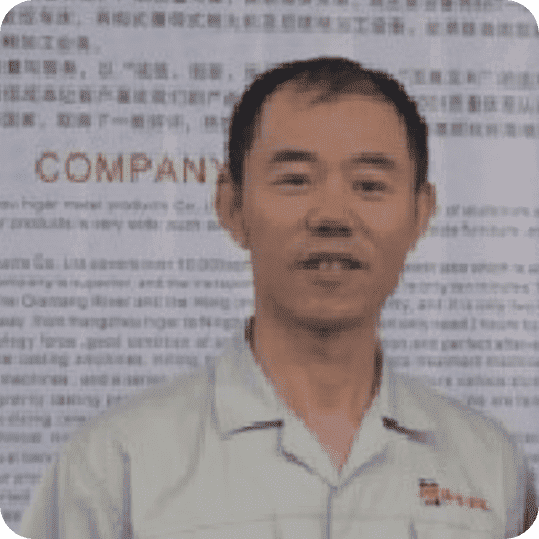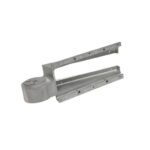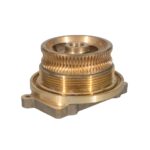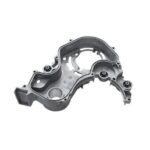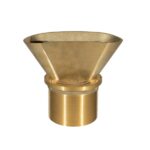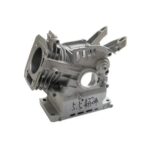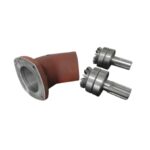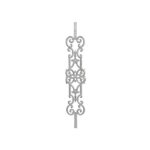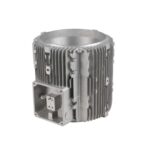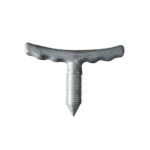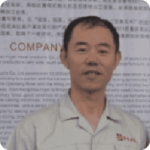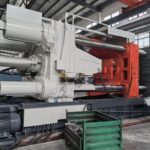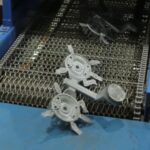Die cast aluminum has become one of the most widely used materials across industries such as automotive, medical equipment, energy, and consumer products. The reason is simple: aluminum alloys used in die casting provide an excellent balance of lightweight performance, strength, corrosion resistance, and dimensional accuracy. For buyers, however, understanding aluminum’s material properties is not just about engineering—it directly affects cost of ownership (TCO), part reliability, and supplier selection.
This guide goes beyond simple property charts. While you will find full tables for mechanical, physical, and chemical properties, we will also explain what these numbers mean for real-world applications. You will learn how alloys like A380, A360, and ADC12 differ, how their properties influence cost and performance, and how to evaluate the right material for your parts. By the end, you’ll have both the technical knowledge and the buyer-focused insights to make informed procurement decisions.
What is Die Cast Aluminum Material?
Die cast aluminum is produced by injecting molten aluminum alloy into a precisely machined steel mold under high pressure. Once solidified, the casting is ejected and is typically near-net shape, requiring minimal machining. The process is highly automated, repeatable, and ideal for large-volume production of complex parts.
Die Cast Aluminum vs. Cast Aluminum (Gravity/Sand Casting)
- Die cast aluminum uses high pressure and steel dies, resulting in excellent dimensional accuracy, smooth surface finish, and suitability for thin-walled or complex components. It is ideal for automotive housings, electronic enclosures, and medical device parts.
- Cast aluminum (gravity or sand casting) relies on gravity or low pressure to fill the mold. While tooling costs are lower, dimensional accuracy is poorer and wall thickness is less uniform. It is better suited for low-volume production or very large parts.
👉 For buyers, the choice between die cast and cast aluminum directly impacts tooling investment, unit price, and delivery lead time. High-volume OEM buyers generally benefit from die casting due to its consistency and scalability.
Classification of Die Cast Aluminum Alloys
By Common Grades (Material Analysis)
Beyond general classification by alloying elements, buyers often compare specific grades when choosing a die cast aluminum material. Each grade has distinct advantages and trade-offs in terms of castability, strength, corrosion resistance, and cost. Below is a material analysis of the most common alloys.
A380 Alloy Material Properties
A380 is the most widely used die cast aluminum alloy worldwide. It offers an excellent balance of strength, corrosion resistance, thermal conductivity, and castability. Buyers prefer A380 because of its stable production performance and broad supplier availability, which lowers risk in sourcing.
- Key Properties: Good strength, good corrosion resistance, very good castability.
- Applications: Automotive engine blocks, transmission housings, brackets, and industrial equipment.
- Buyer Note: A380 is often the default choice for high-volume OEMs. It provides cost-effective production without sacrificing reliability, making it suitable for most general applications.
A360 aluminum properties
A360 is known for its superior corrosion resistance and pressure tightness, outperforming A380 in harsh environments. However, it is more difficult to cast, which can increase scrap rates and tooling demands.
- Key Properties: High corrosion resistance, better pressure tightness, lower fluidity than A380.
- Applications: Marine equipment, aerospace housings, and energy industry components requiring long-term durability.
- Buyer Note: Best for parts exposed to saltwater, chemicals, or extreme humidity. Buyers should consider slightly higher production costs compared to A380 due to casting difficulty.
ADC12 Alloy aluminum properties
ADC12 is the most commonly used alloy in Asia, closely related to A383 (U.S.) and YL113 (China). With slightly higher copper content, it provides excellent machinability and fluidity, making it ideal for thin-wall designs.
- Key Properties: Very good machinability, high fluidity, lower corrosion resistance than A360/A380.
- Applications: Electronic housings, LED lighting parts, automotive trim, consumer products.
- Buyer Note: Excellent choice for complex or thin-wall castings. However, avoid using it in corrosive environments unless coatings or secondary treatments are applied.
383 Alloy (A383 in U.S.)
383 alloy is often used as an alternative to A380 when better ductility is required. Its fluidity is higher, making it suitable for thin or intricate shapes, but it has slightly lower strength.
- Key Properties: Good ductility, high fluidity, lower strength than A380.
- Applications: Thin-wall electronics housings, connectors, and precision casings.
- Buyer Note: Recommended when design complexity outweighs strength requirements.
413 Alloy
413 is valued for its excellent pressure tightness and good corrosion resistance. It is less common than A380 or A360 but essential for parts requiring leak-proof performance.
- Key Properties: High pressure tightness, good corrosion resistance, decent strength.
- Applications: Hydraulic components, pump housings, and energy control systems.
- Buyer Note: Choose 413 if your parts will withstand high internal pressure or require leak-free performance.
6061 Alloy
6061 is primarily a wrought alloy but is often compared to die cast grades because buyers sometimes request it for its high strength and machinability. It is not typically used for die casting but is relevant in CNC-machined or forged parts.
- Key Properties: High strength, excellent machinability, good corrosion resistance.
- Applications: Aerospace structures, automotive components, energy systems requiring strength.
- Buyer Note: If a supplier offers “die cast 6061,” confirm the process—it is usually machined from billet or forged, not high-pressure die cast.
7075 Alloy
7075 is another wrought alloy, famous for its very high strength-to-weight ratio, often used in aerospace. It is rarely die cast due to its poor castability but is important for buyers to distinguish.
- Key Properties: Extremely high strength, moderate corrosion resistance, poor castability.
- Applications: Aircraft frames, defense components, sports equipment.
- Buyer Note: Buyers should not confuse 7075 with die cast alloys. It is generally forged or machined, not pressure die cast.
AlSi9Cu3 Alloy
AlSi9Cu3 is a popular European alloy, widely used for automotive and structural applications. It offers a good balance of strength, corrosion resistance, and castability, comparable to A380.
- Key Properties: High strength, good corrosion resistance, excellent dimensional stability.
- Applications: Automotive gearboxes, engine covers, and industrial housings.
- Buyer Note: Often selected in European sourcing projects. Its properties are very close to A380, making it a safe substitute when A380 is unavailable.
Key Material Properties of Die Cast Aluminum
Die cast aluminum alloys are chosen not just for their chemical composition, but for the specific material properties that define performance in real-world applications. Below are the most critical properties buyers should evaluate.
Low Density (Lightweight)
Aluminum alloys typically have a density of ~2.7 g/cm³, making them about one-third the weight of steel. For buyers, this translates into lighter components, reduced shipping costs, and improved fuel efficiency in automotive applications.
High Strength-to-Weight Ratio
Despite being lightweight, alloys such as A380 and A360 deliver strong mechanical performance. This balance makes them ideal for structural automotive parts, aerospace housings, and industrial equipment where both durability and weight reduction matter.
Excellent Corrosion Resistance
Alloys like A360 and AlSi9Cu3 form a natural protective oxide layer that resists corrosion. Buyers in marine, energy, and outdoor equipment industries rely on this property to ensure long-term reliability without costly coatings.
Thermal & Electrical Conductivity
Die cast aluminum is an excellent conductor of both heat and electricity. This makes it highly suitable for heat sinks, LED lighting housings, battery enclosures, and electronic components. Buyers benefit from efficient thermal management and energy transfer.
High-Temperature Performance
Certain alloys, such as 413 and A360, maintain strength under elevated temperatures, making them suitable for engine compartments, power tools, and energy equipment. For buyers, this ensures performance stability even in demanding environments.
Dimensional Stability & Castability
Aluminum alloys exhibit excellent flow characteristics and minimal shrinkage, allowing for intricate, thin-walled designs with tight tolerances. This reduces the need for secondary machining, saving buyers both time and cost.
Recyclability & Sustainability
Aluminum is one of the most recyclable materials in manufacturing. Recycled alloys often retain 95–100% of their original properties, making them a sustainable option for eco-conscious buyers. This also reduces raw material costs and supports compliance with green manufacturing standards.
Mechanical, Physical, and Chemical Properties of Die Cast Aluminum
Understanding the material properties of die cast aluminum is critical for buyers making procurement decisions. Below are the typical ranges of mechanical, physical, and chemical properties of the most common alloys such as A380, A360, ADC12, and AlSi9Cu3.
Mechanical Properties
| Alloy | Tensile Strength (MPa) | Yield Strength (MPa) | Elongation (%) | Hardness (HB) |
|---|---|---|---|---|
| A380 | 310 | 170 | 3.5 | 80–90 |
| A360 | 320 | 180 | 3.0–3.5 | 75–85 |
| ADC12 | 250–280 | 130–150 | 1.0–2.0 | 85–95 |
| AlSi9Cu3 | 280–300 | 150–160 | 2.5–3.0 | 80–90 |
Buyer Note:
- A380 and A360 provide a balance of strength and ductility, suitable for automotive structural parts.
- ADC12 has lower strength but higher machinability, making it cost-effective for consumer electronics and lighting housings.
- For parts requiring dimensional stability and moderate strength, AlSi9Cu3 is often chosen in European sourcing projects.
Physical Properties
| Alloy | Density (g/cm³) | Thermal Conductivity (W/m·K) | Electrical Conductivity (% IACS) | Coefficient of Thermal Expansion (µm/m·°C) |
|---|---|---|---|---|
| A380 | 2.75 | 96 | 32 | 21 |
| A360 | 2.68 | 110 | 36 | 20 |
| ADC12 | 2.74 | 96 | 31 | 21 |
| AlSi9Cu3 | 2.72 | 105 | 34 | 21 |
Buyer Note:
- A360 has higher thermal conductivity, making it more suitable for heat sinks, battery housings, and LED lighting.
- All alloys share low density, which benefits transportation and logistics by reducing weight.
- For electronic components, higher electrical conductivity in A360 and AlSi9Cu3 improves energy efficiency.
Chemical Composition (Typical Ranges, %)
| Alloy | Si | Cu | Mg | Fe | Zn | Mn | Ni | Others |
|---|---|---|---|---|---|---|---|---|
| A380 | 7.5–9.5 | 3.0–4.0 | 0.1 | ≤1.3 | ≤1.0 | ≤0.5 | ≤0.5 | ≤0.5 |
| A360 | 9.0–10.0 | ≤0.6 | 0.4–0.6 | ≤0.6 | ≤0.5 | ≤0.5 | ≤0.5 | ≤0.5 |
| ADC12 | 9.6–12.0 | 1.5–3.5 | ≤0.3 | ≤1.3 | ≤1.0 | ≤0.5 | ≤0.5 | ≤0.5 |
| AlSi9Cu3 | 8.0–11.0 | 2.0–3.5 | ≤0.3 | ≤1.3 | ≤1.0 | ≤0.5 | ≤0.5 | ≤0.5 |
Buyer Note:
- Silicon (Si) improves fluidity → higher Si content (ADC12, A360) is best for thin-wall parts.
- Copper (Cu) increases strength and machinability but reduces corrosion resistance → ADC12 has higher Cu, ideal for electronics but not marine applications.
- Magnesium (Mg) improves corrosion resistance and strength (A360), making it suitable for aerospace and marine industries.
Applications of Die Cast Aluminum Alloys
Die cast aluminum alloys are widely used across industries because they combine lightweight properties, strength, and excellent dimensional accuracy. However, buyers should not only think in terms of “industries,” but also the specific parts that benefit from each alloy. Below are the key application areas with real-world examples.
Automotive Industry
Aluminum die casting has become indispensable in modern automotive manufacturing, especially with the push toward lightweighting and electric vehicles.
- Key Parts: Engine blocks, transmission housings, EV battery enclosures, control units, steering components, brackets.
- Buyer Insight:
- A380 is often the default for transmission housings due to balanced cost-performance.
- A360 is selected for engine covers or components near high heat and corrosion exposure.
- ADC12 is popular in Asia-based suppliers for electronic housings and trim due to its machinability.
- Procurement Value: Lightweight aluminum improves fuel efficiency or EV range, while die casting reduces machining costs and accelerates mass production.
Medical Equipment
In medical device manufacturing, die cast aluminum offers both durability and ease of sterilization.
- Key Parts: Imaging equipment housings, surgical tool frames, wheelchair components.
- Buyer Insight:
- ADC12 and A383 are used for precision casings where thin walls and intricate designs are required.
- A360 provides superior corrosion resistance, important for hospital environments with cleaning chemicals.
- Procurement Value: Ensures longer equipment life and consistent dimensional accuracy, reducing replacement costs and improving patient safety.
Energy & Power Systems
Die cast aluminum plays a critical role in both renewable and conventional energy systems.
- Key Parts: Solar inverter housings, wind turbine control casings, battery enclosures, hydraulic pump housings.
- Buyer Insight:
- A360 and 413 are commonly chosen where pressure tightness and corrosion resistance are essential (e.g., pump housings).
- AlSi9Cu3 is widely used in Europe for gearbox housings in wind and hydropower equipment.
- Procurement Value: Material selection directly affects maintenance costs and operational reliability of energy infrastructure.
Consumer Electronics
The demand for sleek, durable, and heat-dissipating housings has made aluminum die casting a material of choice.
- Key Parts: Laptop frames, smartphone housings, LED lighting fixtures, gaming equipment.
- Buyer Insight:
- ADC12’s high fluidity makes it ideal for thin-wall designs in electronics.
- A383 provides ductility for intricate casing geometries.
- Procurement Value: Buyers benefit from fewer machining steps, lower unit costs, and premium product aesthetics that add end-user value.
Industrial & Machinery Applications
In heavy machinery and industrial equipment, die cast aluminum provides both structural support and precision.
- Key Parts: Gear housings, compressor casings, pump bodies, machine brackets.
- Buyer Insight:
- A380 is a common choice due to balanced properties.
- 413 is favored for hydraulic and pneumatic components where leak resistance is vital.
- Procurement Value: Reduces downtime and warranty claims, ensuring components remain reliable under stress.
Safety, Durability, and Sustainability of Die Cast Aluminum
When selecting materials, buyers often ask questions beyond mechanical strength and cost. Concerns about safety, corrosion, and sustainability play a major role in procurement decisions, especially for industries like cookware, energy systems, and consumer products. Below we address the most frequently asked questions.
Is Die Cast Aluminum Safe for Cookware and Consumer Products?
Yes, die cast aluminum is generally safe for cookware and consumer goods, provided that the alloy and surface treatments meet regulatory standards. Pure aluminum and standard die casting alloys are non-toxic, but coatings and finishes must be carefully considered.
- Buyer Insight: For cookware, alloys like ADC12 and A383 are widely used in Asia, often with non-stick or anodized coatings. Buyers should confirm that suppliers comply with FDA, EU, or local food-contact regulations.
- Procurement Value: Ensuring compliance reduces the risk of recalls and strengthens product credibility in consumer markets.
Does Die Cast Aluminum Rust?
Unlike iron or steel, aluminum does not rust. Instead, it forms a thin, natural oxide layer that protects against further corrosion. However, certain environments (saltwater, acidic chemicals) can still attack aluminum if the alloy has high copper content.
- Buyer Insight:
- A360 and AlSi9Cu3 are preferred for marine or chemical environments due to better corrosion resistance.
- ADC12 has higher copper content, which makes it less suitable for harsh outdoor use unless coated.
- Procurement Value: Buyers can extend product life by specifying alloys with higher corrosion resistance or adding protective coatings, reducing long-term maintenance costs.
Is Die Cast Aluminum Recyclable?
Yes, aluminum is one of the most recyclable industrial materials. Up to 95–100% of its properties are retained after recycling, which means die cast aluminum can be re-melted and reused almost indefinitely.
- Buyer Insight: Recycled aluminum is often used in alloys like A380 and ADC12 without significant property loss. Many buyers now prioritize suppliers with closed-loop recycling systems to meet sustainability targets.
- Procurement Value: Using recycled aluminum reduces raw material costs and helps buyers align with green manufacturing goals demanded by global supply chains.
FAQs Buyers Ask About Die Cast Aluminum
1. What is the difference between die cast aluminum and cast aluminum?
Die cast aluminum is produced by injecting molten alloy into a steel mold under high pressure, resulting in tight tolerances, smooth surface finishes, and thin-wall capability. Cast aluminum (sand or gravity cast) is poured into a mold without pressure, which makes it less precise, more porous, and thicker in wall design.
2. Is die cast aluminum stronger than stainless steel?
No. Stainless steel has higher ultimate strength and toughness. However, die cast aluminum offers a much better strength-to-weight ratio and is significantly lighter.
3. Is A380 better than A360 or ADC12?
It depends on the application:
- A380: Most versatile, good balance of properties, cost-effective.
- A360: Better corrosion resistance and heat resistance, but harder to cast.
- ADC12 (A383 equivalent): Superior machinability and fluidity, ideal for thin-wall parts, but lower corrosion resistance.
4. Does die cast aluminum corrode?
Aluminum does not rust like steel, but it can corrode under certain conditions. Alloys with higher copper content (e.g., ADC12) are more prone to corrosion. Protective coatings, anodizing, or paints are often applied to extend service life.
5. Can die cast aluminum be welded?
In most cases, no. High-pressure die castings have porosity that makes welding difficult. However, secondary joining methods like screws, adhesives, brazing, or mechanical fasteners are commonly used.
6. What industries use die cast aluminum the most?
- Automotive: Engine blocks, EV control housings.
- Medical: Device casings, imaging housings.
- Energy: Solar inverter housings, hydraulic pumps.
- Consumer Electronics: Laptops, lighting housings, gaming devices.
7. How long do die cast aluminum parts last?
With proper design and alloy selection, die cast aluminum components can last 10–20 years in automotive or energy applications. Their durability depends on alloy choice, corrosion protection, and load conditions.
8. Is die cast aluminum recyclable and sustainable?
Yes, die cast aluminum retains 95–100% of its properties when recycled. Many suppliers use recycled feedstock to cut costs and meet environmental goals.
9. Can die cast aluminum replace steel in automotive applications?
In many cases, yes. Die cast aluminum reduces vehicle weight, improves fuel efficiency, and enables complex shapes. However, it cannot fully replace steel in ultra-high-stress areas like crash structures.
10. Does die cast aluminum save cost compared to CNC machining?
Yes. Once the mold is built, high-pressure die casting offers low unit cost for large volumes. CNC machining has no tooling cost but becomes expensive at scale.

